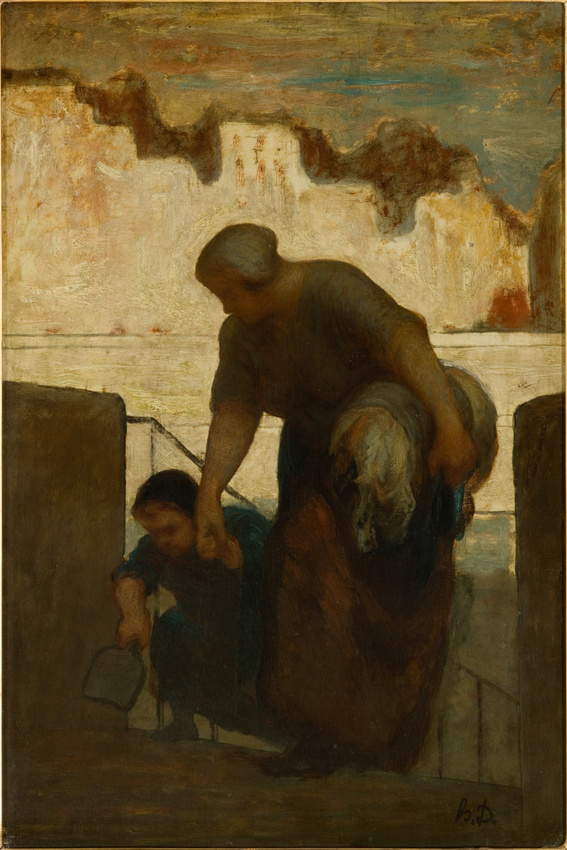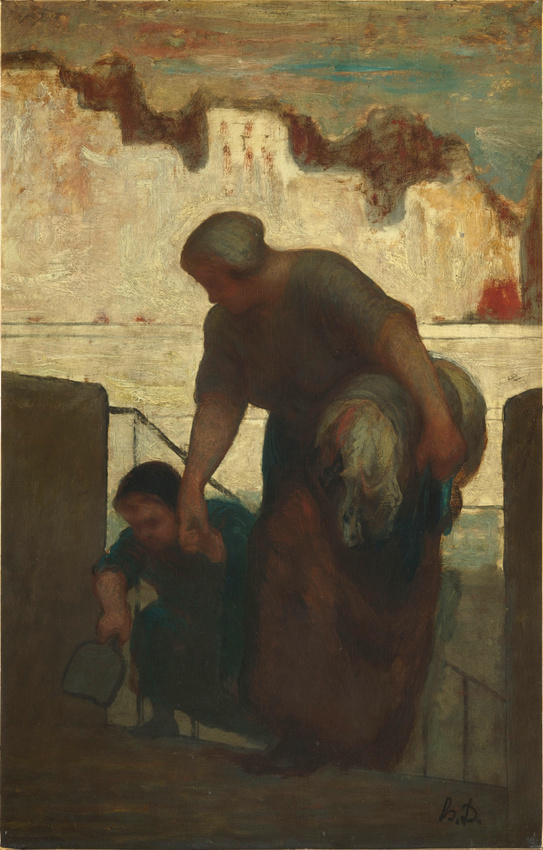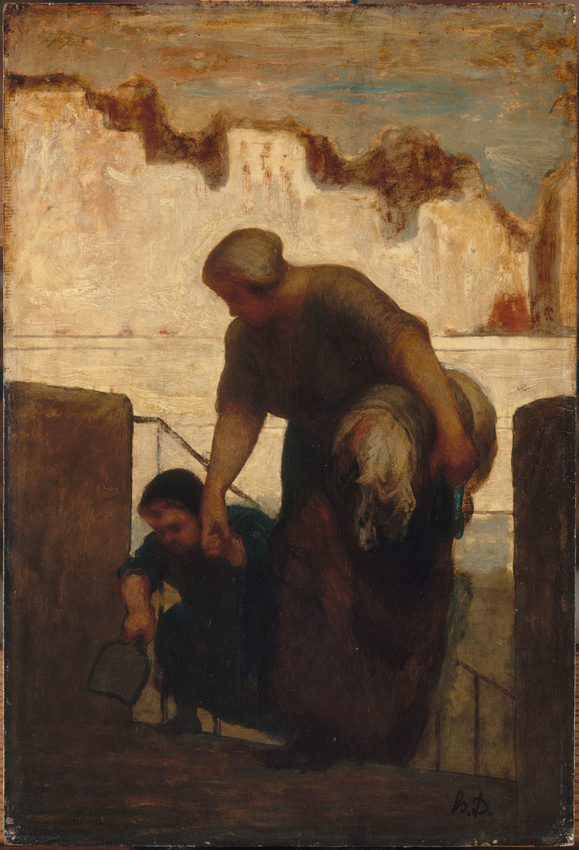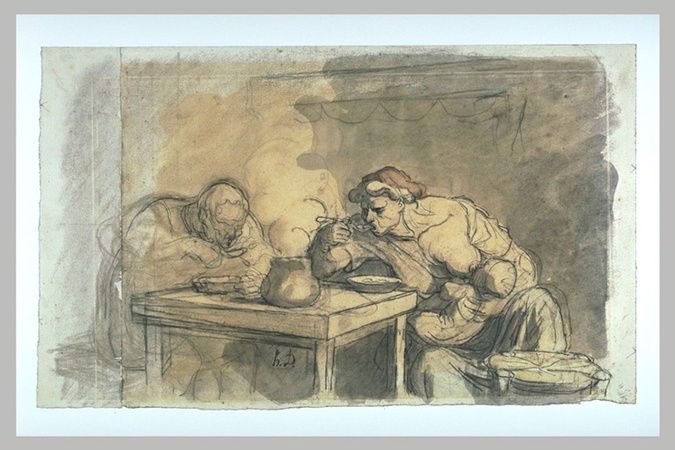La Blanchisseuse
Daumier often painted urban labourers under the Second Empire. Although famous for his caricatures, often published as lithographs, he was nonetheless an accomplished artist, both a painter and a sculptor.
There are three similar versions on the theme of the laundress, the first of which appeared in the Salon in 1861. At a time when Millet was turning his back on folklore and taking a fresh look at the peasant world in the 1850s, this painting offered a similar analysis of the plight of city workers. Stripped of the playful, gracious air that Boucher, Fragonard or Hubert Robert gave their washerwomen in the 18th century, Daumier's Laundress epitomises a social type characterised by gruelling repetitive toil.
The attention given to the figures reveals the toll it took on souls and bodies. There is a mixture of resignation and tenderness in the mother helping her child climb the high steps. Clutching a beater in her hand, the little girl seems destined to carry on her mother's task.
The houses along the quay in Paris in the background provide a luminous setting, no doubt precisely observed, but left unfinished to give the scene a powerful symbolic dimension.
The focus on humble folk is accompanied by a concern for force and monumentality reminiscent of Michelangelo, showing the spectator a sort of "real allegory".










